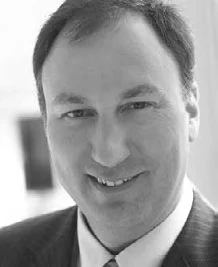HealthManagement, Volume 9 - Issue 3, 2009
Prof. Dr. Jörg F. Debatin, 47, is medical director and CEO of the University Medical Centre Hamburg-Eppendorf since 2003. Here, the author of 30 reviews, 6 books, 1,000 scientific presentations, and more than 300 invited lectures, and former radiology department leader tells us about life as hospital CEO. We also learn about the five-year restructuring project he engineered at Hamburg.
What are the Highlights of Your Typical Day?
My job is centred around communication. I try to keep an hour free of meetings each day to walk around the medical centre for firsthand impressions. Beyond that, most days are filled with regular meetings, the most important of which is our weekly executive board meeting on Monday afternoon. Throughout the week, I meet on a regular basis with all professions employed in our medical centres including physicians, nurses, administrative personnel, technical support personnel as well as our researchers, teachers and students. I also represent our medical centre to the outside world and attend numerous formal functions in this capacity.
Please Talk Us Through Some of the Changes You Made in Hamburg.
A total restructuring of the medical centre at Hamburg was implemented, reorganising 6,500 employees, 81 departments and institutes organised in 14 centres, and ensuring optimal care for the average 60,000 in-house patients and 120,000 out-patients that walk through our doors each year. This major project re-engineered many processes and functions both practically and theoretically, such as the building of interprofessional teams consisting of nursing, technical services and physicians working beyond departmental borders, restructuring the activity portfolios of physicians and nursing services, implementing the first fully electronic patient record system in Germany and making a complete economic turnaround.
We also undertook the construction of Europe’s most modern hospital, with an 85,000m2 space, 3,500 rooms, a capacity for 860 patient beds and 150,000 outpatient contacts per annum. It also boasts a fully integrated emergency room with capacity for 80,000 patient contacts, 16 operating rooms, and a high specification infrastructure. We built a surrounding network of portal hospitals and referring physician networks, and grew our patient base by over 40% over a five-year period. We took our facility from a 36 million euro loss in 2003, to a projected profit in 2009. Not only this, but we also doubled our research output (including publications, grant support and mentoring) within this five-year period.
Why did You Choose to Follow an MBA?
Business has intrigued me for a long time. My decision to enroll in an MBA programme was motivated more by intellectual curiousity than the distinct plan to spend my life managing a hospital. In my current job, my management ‘hobby’ has evolved into my main activity. The philosophy of radiology being a secondary service provider in a hospital setting adds much to good management practices. Therefore, the transition may not have been as profound as had I pursued a prior career in, say, surgery.
Was the Transition to CEO Challenging?
Obviously, the characteristics of a CEO position have a lot to do with the size and nature of the managed business. I cannot think of any more complex or more interesting institution than an academic medical centre in this regard. I am convinced that such an institution with an annual turnover exceeding 600 million euros and employing close to 7,000 people requires full-time professional leadership. Even five years into the transition, the job continues to confront me with a wide array of new challenges.
Do Patients Take Enough Action Regarding Their Own Healthcare?
Due to the internet, the attitude of patients to healthcare in general is rapidly evolving. It has helped vastly in providing transparent information about the quality of medical services provided on an elective basis. This is also true for the evolving field of preventive medicine. As the health consciousness of the population continues to rise, we will see the market of preventive medicine increase proportionally. In order to preserve this market development, physicians and particularly radiologists should be careful with regard to the services they offer in this field. Thus, imaging exams with ionising radiation exposure have no place in secondary prevention.
How can Other Directors Ease the Purchasing Process?
To help radiologists, we have centralised all purchasing decisions in a special department staffed with experts. The role of the radiologist is crucial in defining the specific imaging needs. We ask our radiologists to be as detailed as possible in defining needs criteria and rank them according to importance. The rest of the process is driven by our purchasing staff, who have experience in analysing all technical data and mapping it against financial ramifications. Regarding finances, we no longer focus as much on purchasing costs as we do on life-cycle costs. Prior to a final decision, each of the arguments is related to the radiologist or other physicians directly affected by the purchase. If a consensus cannot be reached, the executive board decides the issue.
What is Your Favourite Memory From Your Days as a Medical Resident?
One of the most memorable experiences during my radiology residence training at Duke University Medical Centre in Durham/North Carolina were radiology rounds with the former chairman Dr. Charles Potman. Himself a most accomplished academic radiologist, he insisted on being presented with the clinical history of each patient prior to interpreting any imaging exam including simple exams such as a chest x-ray.
As a resident, it was my job to obtain this information from the clinical history of each patient. This experience taught me that radiologists should not limit their work to interpreting films but rather see themselves as a crucial part of the integrated medical process.






